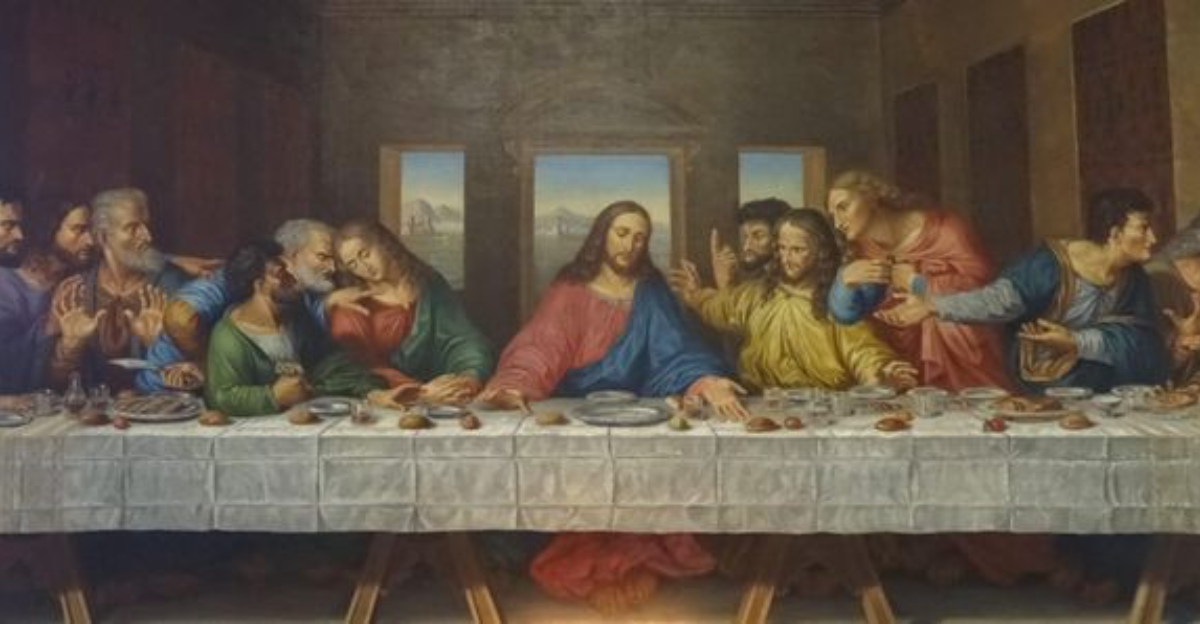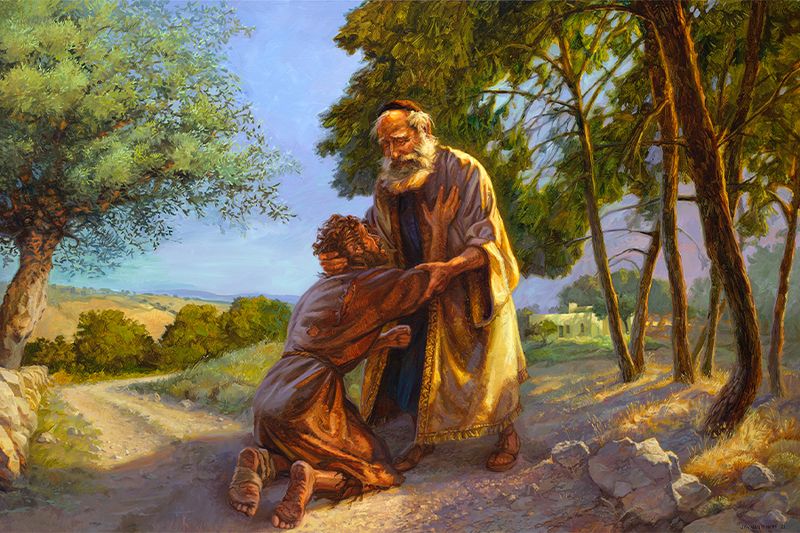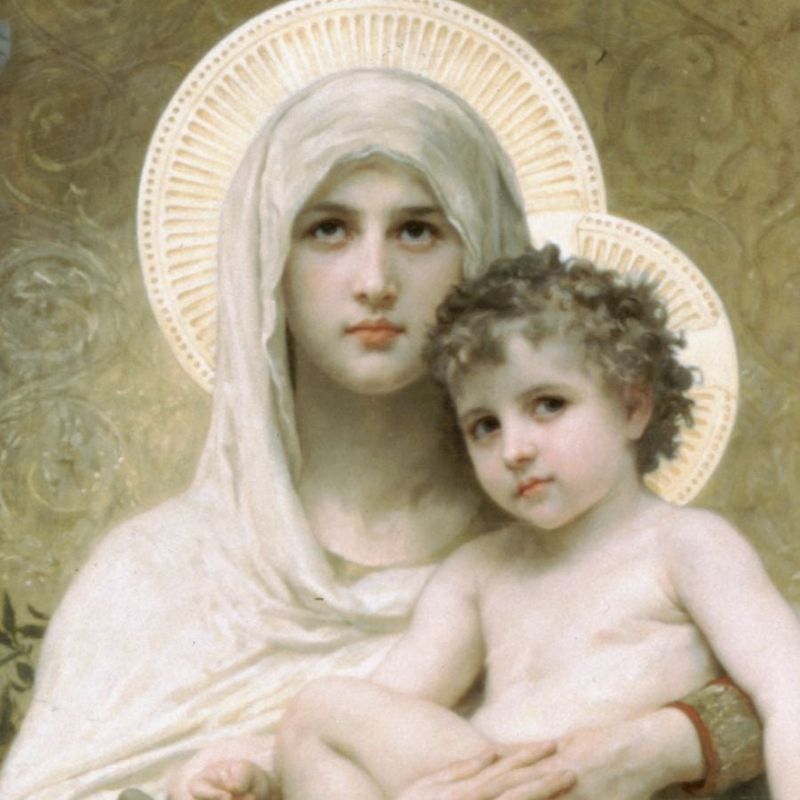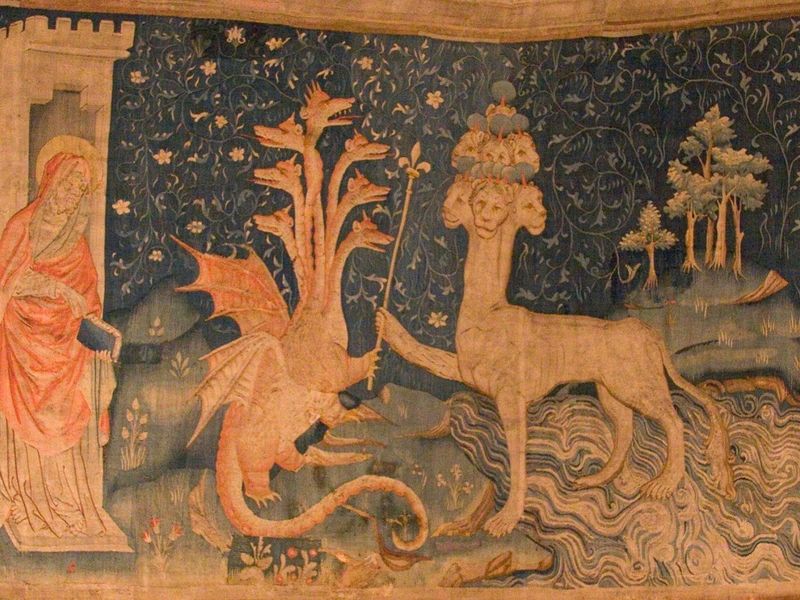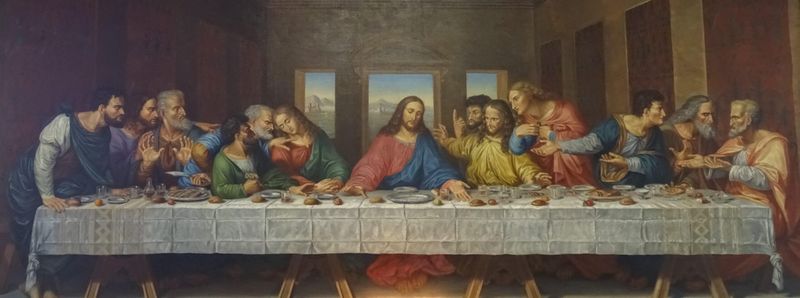Explore the truth behind commonly misunderstood church traditions. Many practices have deep historical roots and meanings that differ from popular beliefs. This article aims to clarify these misconceptions by delving into the origins and true significance of 21 church traditions.
1. The Sign of the Cross
The Sign of the Cross, often seen as a purely Catholic practice, has a rich history dating back to the 2nd century. Early Christians, including Orthodox and some Protestant groups, embraced it as a form of physical prayer. This symbolic gesture served as a profound expression of faith, marking a believer’s commitment to God.
The act was considered a protective shield against evil and a reminder of Christ’s sacrifice. Through this simple yet powerful motion, believers connected spiritually with the divine. It was not merely a ritual but a heartfelt declaration of faith and devotion.
2. The “Halo” in Christian Art
Commonly perceived as a mere glowing circle for saints, the halo in Christian art symbolizes much more. Its origins trace back to pagan sun gods, representing divine wisdom and holiness. Early Christian artists adopted the halo to signify a person’s spiritual enlightenment.
Over time, the halo became a staple in depicting saints and holy figures, highlighting their connection to God. This adaptation showcases the blend of cultural influences in religious iconography. The halo’s transformation from a pagan emblem to a Christian symbol underscores the evolving nature of religious art and understanding.
3. Saying “Amen” at the End of Prayers
The term “Amen” at the end of prayers is often mistaken for a mere closure, akin to saying, “The End.” In reality, “Amen” is rooted in Hebrew, meaning “So be it” or “I agree.” Early Christians used this word to affirm teachings and express unity in faith.
It symbolized collective agreement and steadfast belief in the truths being shared. More than just a ritualistic ending, saying “Amen” was a profound declaration of communal faith and conviction, reinforcing the spiritual bond among believers.
4. The Fish Symbol (Ichthys)
Widely recognized as a secret Christian code, the fish symbol, or Ichthys, is steeped in historical significance. Used discreetly during Roman persecution, it served as a clandestine identifier among believers. However, its meaning extends to Jesus’ metaphor of “Fishers of Men.”
This emblem connected followers through shared faith and mission. The Ichthys’ dual role as a secret symbol and a representation of evangelism illustrates its profound impact on early Christian identity and communication, transcending its simple appearance.
5. Wedding Rings in Church Ceremonies
Contrary to popular belief, wedding rings are not a biblical tradition. Their origins are rooted in pagan customs, with the church adopting them during the Middle Ages to symbolize marital unity. Rings represented an unbreakable bond and were seen as a sign of eternal love.
This adaptation of pagan practices reflects the church’s willingness to incorporate cultural elements into its rituals. The use of wedding rings in ceremonies highlights the melding of traditions to create meaningful symbols that resonate with congregants’ lives and values.
6. The Rosary
The Rosary is often thought to be a Catholic invention, but its roots trace back to early monks. These devoted individuals used knotted ropes to count prayers, a practice that eventually evolved into the modern Rosary. This tool served as a meditative aid, guiding worshippers in their spiritual journey.
It became a cherished practice for many, offering solace and focus during prayer. The Rosary’s evolution from simple prayer ropes to intricate beads illustrates the enduring power of devotional practices in nurturing faith and contemplation.
7. “Thou Shalt Not Kill” (Exodus 20:13)
The commandment “Thou Shalt Not Kill” is commonly interpreted as a universal ban on killing. However, the Hebrew word “ratsach” specifically means murder, distinguishing it from war or capital punishment. This distinction underlines the nuanced understanding of justice and morality.
The commandment served as a moral compass, emphasizing the sanctity of life while acknowledging the complexities of human conflict. It highlights the importance of context in interpreting ancient texts, revealing the depth and precision of biblical teachings.
8. The “Forbidden Fruit” as an Apple
The image of the apple as the forbidden fruit is a widespread misconception. The Bible never specifies the fruit’s type, leading artists to choose apples due to the Latin word “malum,” meaning both “apple” and “evil.” This artistic choice has shaped popular interpretations.
By depicting the fruit as an apple, artists linked sin to a universally recognizable fruit. This decision illustrates the powerful role of symbolism in shaping religious narratives and the interpretations that endure through time.
9. The Trinity Doctrine
Many believe the Trinity is explicitly defined in the Bible, but the term “Trinity” never appears in Scripture. It was formalized centuries later by church theologians to articulate the complex nature of God’s threefold existence. This doctrine reflects deep theological exploration.
The development of the Trinity doctrine showcases the church’s efforts to define and understand divine mysteries. Its acceptance reveals the dynamic relationship between Scripture, tradition, and theological interpretation throughout history.
10. The Date of Christmas (December 25)
December 25 is widely celebrated as Jesus’ birth date, yet this choice likely coincides with pagan festivals like Saturnalia and Sol Invictus. By aligning Christmas with these celebrations, the church facilitated conversion and cultural integration.
This strategic decision underscores the adaptability of religious practices and the blending of traditions to create meaningful observances. It highlights the church’s historical engagement with cultural contexts to foster spiritual growth and unity among believers.
11. “Clean” vs. “Unclean” Animals in Leviticus
The distinction between “clean” and “unclean” animals in Leviticus is often seen as arbitrary. However, many restrictions served health purposes, preventing disease in ancient times. This understanding reveals the practical and spiritual dimensions of dietary laws.
These guidelines offered a framework for holiness and community welfare, demonstrating the integration of health and faith. The nuanced perspective on dietary restrictions emphasizes the care and wisdom in biblical instructions, reflecting both cultural and divine insights.
12. The “Eye of the Needle” Metaphor
The metaphor “Eye of the Needle” is often misunderstood as referring to a literal sewing needle. However, it likely describes a small gate in Jerusalem, challenging but not impossible for a camel to pass through. This metaphor emphasizes the difficulty of spiritual entry.
It serves as a vivid illustration of the challenges of wealth and spiritual humility, urging believers to prioritize spiritual over material wealth. The metaphor’s imagery invites reflection on the values guiding one’s life journey and spiritual pursuits.
13. The “Prodigal Son” Parable
The “Prodigal Son” parable is widely interpreted as a tale of reckless living. However, the real scandal lies in the father’s unconditional forgiveness, a surprising act in that culture. This narrative highlights the transformative power of grace and reconciliation.
It challenges societal norms, offering a radical vision of love and redemption. The parable’s emphasis on forgiveness and familial restoration invites reflection on the nature of relationships and the potential for renewal, even in seemingly irreparable situations.
14. The “Three Wise Men”
The “Three Wise Men” are often depicted as three kings visiting baby Jesus. Yet, the Bible never mentions their number, only that they brought three gifts: gold, frankincense, and myrrh. This detail has shaped artistic and cultural representations.
Their journey symbolizes the acknowledgment of Jesus’ kingship and divine mission. The wise men’s story invites exploration of faith, curiosity, and the pursuit of spiritual truth beyond assumptions and artistic depictions.
15. The “Virgin” Mary
The title “Virgin” Mary is commonly linked to biological virginity, but the Hebrew word “almah” can also mean a young woman. Greek translations emphasized virginity, shaping theological perspectives and devotion.
This linguistic nuance highlights the interplay between language, tradition, and belief in shaping religious identity. Understanding Mary’s role invites deeper reflection on the dynamics of faith, interpretation, and cultural influences that shape spiritual narratives.
16. The “Seven Deadly Sins”
The “Seven Deadly Sins” are often thought to be a biblical list, but they were compiled by 6th-century monks, not Scripture. This categorization served as a moral guide, reflecting the spiritual concerns of the time.
The list offered a framework for introspection, encouraging believers to recognize and combat personal vices. It showcases the church’s role in shaping ethical discourse and guiding spiritual growth through history, beyond the scriptural texts themselves.
17. The “Horns” of Moses (Michelangelo’s Statue)
Michelangelo’s depiction of Moses with horns stems from a mistranslation of the Hebrew word “karan” (radiant) as “keren” (horns). This artistic error has sparked curiosity and debate over the years.
The statue underscores the complexities of language and interpretation in art and scripture. It invites viewers to explore the boundaries between artistic expression and theological accuracy, reflecting the challenges of translating sacred texts into visual forms.
18. The “Mark of the Beast” (666)
The “Mark of the Beast” is widely feared as an evil symbol, yet early manuscripts also read 616. This variation suggests it might be a code for Emperor Nero, offering a historical context for the number.
Understanding these discrepancies highlights the complexities of scriptural interpretation and the socio-political influences on religious texts. The mark’s symbolism invites reflection on the interplay between faith, power, and historical context.
19. The “Last Supper” Painting (Da Vinci’s Version)
Da Vinci’s “Last Supper” is often seen as a historically accurate depiction. However, in reality, Jews reclined on floors during meals, not at tables. This artistic choice reflects both cultural adaptation and creative expression.
The painting captures the essence of the biblical moment while inviting viewers to explore the intersection of history, culture, and art. It serves as a reminder of the interpretative nature of religious art and the potential for diverse portrayals of sacred events.
20. “Judge Not, Lest Ye Be Judged” (Matthew 7:1)
The phrase “Judge Not, Lest Ye Be Judged” is often taken as a call against all criticism. However, Jesus was specifically warning against hypocritical judgment, not discernment. This distinction underscores the importance of integrity and self-awareness in judgment.
The teaching highlights the value of thoughtful reflection and fair evaluation. It encourages believers to cultivate humility and empathy, fostering a community grounded in understanding and mutual respect.
21. The “Serpent” in Genesis
The serpent in Genesis is commonly linked to Satan, but early Jewish texts viewed it as merely a talking snake. The association with Satan developed later, reflecting evolving interpretations and theological perspectives.
This shift highlights the dynamic nature of religious texts and the influence of cultural and doctrinal developments on scriptural understanding. It invites exploration of the rich tapestry of beliefs and the continual search for meaning within sacred narratives.
